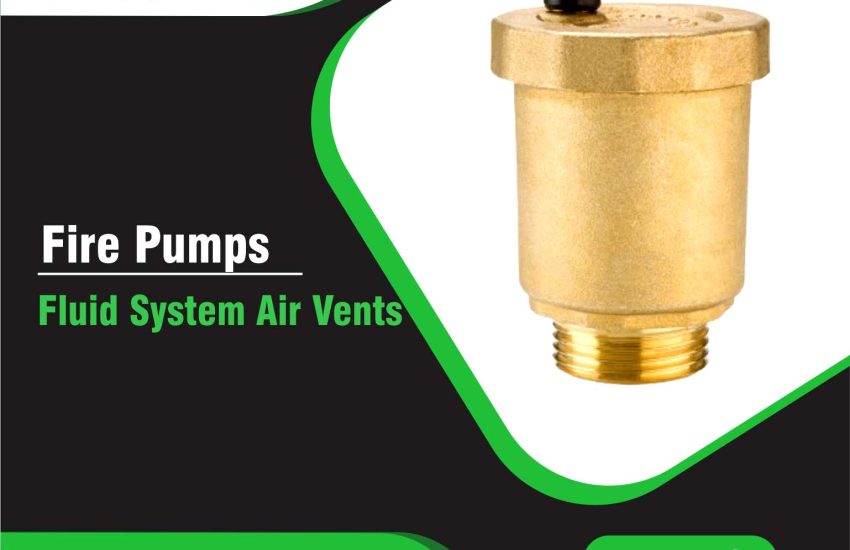Fluid System Air Vents are integral components in any fluid management system, designed to prevent airlocks, improve system efficiency, and enhance the longevity of the system. These vents are crucial for managing air buildup in fluid systems, particularly in applications such as heating systems, industrial machinery, and closed-loop fluid management systems.
In this article, we will explore the air vent specifications, the different types of air vents (manual and automatic), and their role in improving system efficiency, corrosion prevention, and overall fluid management.
What Are Fluid System Air Vents?
Fluid system air vents are devices used to expel trapped air or gas from a fluid system. Trapped air can cause various issues such as pressure fluctuations, corrosion, or inefficiency, making air vents essential for maintaining optimal fluid flow and performance. Air vents can either operate manually or automatically, depending on the system’s requirements.
Air Vent Specifications
When selecting fluid system air vents, it’s important to understand the key specifications that affect their performance. These specifications ensure the air vents are suitable for the type of fluid system and its operating conditions.
1. Size and Flow Capacity
The size of the air vent is closely linked to the system’s flow rate. Larger systems or systems with high flow rates require vents with a higher flow capacity to effectively expel air without compromising efficiency.
2. Pressure Rating
The pressure rating of an air vent indicates the maximum pressure it can handle without failure. It is important to select an air vent with a pressure rating that matches the operating pressure of the fluid system to ensure safe and reliable performance.
3. Temperature Range
The temperature range specification defines the operational limits of an air vent. Systems with fluctuating or extreme temperatures need air vents designed to withstand these conditions to avoid failure or degradation of materials.
4. Material Construction
Air vent material construction is a critical factor in ensuring durability and resistance to corrosion. Common materials used in air vents include stainless steel, brass, aluminum, and plastic. Stainless steel is often chosen for its corrosion resistance and strength, making it ideal for fluid systems that handle water, oil, or other corrosive substances.
Types of Air Vents for Fluid Systems
There are two main types of air vents: automatic air vents and manual air vents. Each type has distinct advantages and is suitable for different fluid system applications.
Automatic Air Vents
Automatic air vents are designed to release air continuously without manual intervention. They are ideal for fluid systems that require constant air expulsion, such as heating systems and closed-loop fluid management systems. Automatic vents are particularly useful in preventing airlocks, which can hinder the fluid flow and damage the system over time.
Manual Air Vents
Manual air vents require human intervention to release trapped air. They are commonly used in smaller fluid systems or where continuous venting is not necessary. Manual vents are often installed as secondary vents or in systems that do not require automatic monitoring.
Combination Air Vents
Some systems utilize combination air vents, which combine the features of both manual and automatic vents. These versatile vents allow for both continuous air release and manual operation when needed.
Benefits of Fluid System Air Vents
Proper air venting in fluid systems is essential for maintaining optimal performance. Below are the key benefits of installing the right air vent:
1. Prevention of Airlocks
Airlocks occur when air is trapped in a system, causing blockages and reducing efficiency. By ensuring proper venting, air vents help prevent airlocks, allowing the fluid to flow smoothly and maintaining system pressure.
2. Improved System Efficiency
By expelling trapped air, air vents prevent energy loss caused by pressure fluctuations and increased resistance. This ensures that the system operates at its peak efficiency, saving energy and reducing operational costs.
3. Corrosion Prevention
Trapped air can lead to the formation of corrosive compounds, especially in systems with water-based fluids. Corrosion prevention is one of the most important roles of an air vent, as it helps extend the lifespan of system components by preventing the buildup of harmful gases and moisture.
4. Enhanced Heating System Performance
In heating systems, air trapped within the system reduces heat transfer efficiency, leading to higher energy consumption. Heating system air vents expel the trapped air, ensuring better heat distribution and improved system performance.
Choosing the Right Air Vent for Your Fluid System
When selecting the appropriate fluid system air vent, consider the following factors:
- Size and capacity: Choose an air vent that can handle the flow rate of your system.
- Material: Select air vents made from durable materials such as stainless steel or brass to withstand corrosion.
- Pressure rating: Ensure that the vent can handle the pressure levels in your system.
- Vent type: Decide between automatic or manual vents based on the level of control you require.
Air Vent Installation
Proper air vent installation is crucial for ensuring optimal performance. For automatic vents, installation at high points in the system ensures that air is expelled efficiently. For manual vents, regular maintenance and operation may be required to maintain airflow.
Conclusion
Fluid system air vents are vital components in fluid management systems, offering significant advantages such as improved system efficiency, corrosion prevention, and prevention of airlocks. Whether you choose automatic air vents for continuous monitoring or manual air vents for smaller systems, selecting the right vent with the appropriate air vent specifications ensures that your system operates smoothly and efficiently.
By considering factors such as material construction, size, pressure rating, and vent type, you can optimize the performance and longevity of your fluid management system. Whether you’re working with a heating system or any other industrial fluid system, fluid system air vents play a crucial role in maintaining consistent fluid flow and system integrity.


